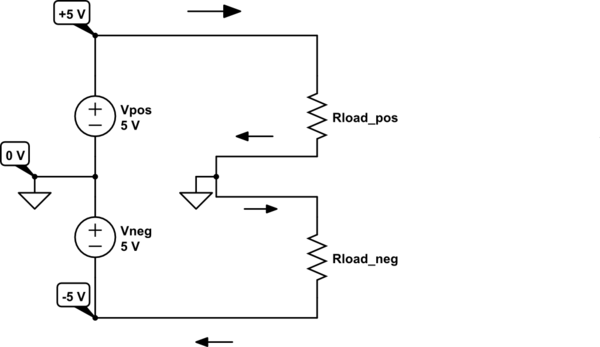What direction does current flow? It’s all about your point of view… from a point in your circuit.
Kirchhoff’s Current Law tells us that currents flowing into a point are regarded as positive, while currents flowing out of a point are considered negative.
What determines the current direction of flow is the potential difference (voltage) between that current’s origin, and the point we’re looking at:
- Origin voltage more positive than point: current flows in
- Origin voltage more negative than point: current flows out
So a negative supply, with respect to ground will have current flowing into it, while ground will have an equal current flowing out.
KCL also tells us that the sum of all the positive currents vs. the sum of all the negative currents are equal. That is, the same current flows out of a point in a circuit as flows in. Add up all the currents, positive and negative, and you should get zero.

